Coriander, also known as cilantro in many parts of the world, is a fragrant herb used widely in cuisines across the globe. Whether you’re making curries, salads, soups, or dips, fresh coriander adds a burst of flavor and aroma that dried versions simply can’t match. The only downside? It tends to wilt and spoil quickly once brought home from the market or harvested from the garden.
If you’ve ever bought a fresh bunch of coriander and found it turning yellow or slimy in just a couple of days, you’re not alone. Fortunately, there are several easy and effective ways to store coriander so it stays fresh and usable for much longer. From simple fridge tricks to freezer hacks, this guide will walk you through everything you need to know.
Why Coriander Spoils So Quickly
Coriander is a soft, leafy herb with high water content, which makes it particularly susceptible to wilting, moisture loss, and microbial decay. Unlike hardy herbs such as rosemary or thyme, coriander has delicate stems and leaves that respond poorly to excess moisture or improper storage. When stored incorrectly, the leaves begin to decay rapidly, especially when exposed to fluctuating temperatures or trapped humidity.
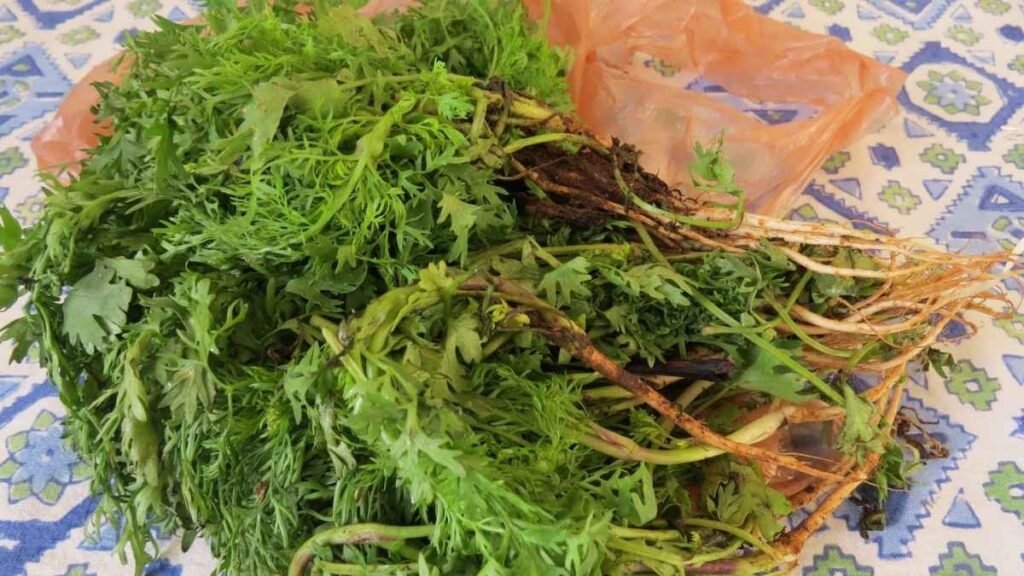
Understanding why it spoils is key to learning how to store it properly. The main culprits are excess moisture, poor airflow, and rough handling. The good news is that with the right storage method, you can keep coriander fresh for up to two to three weeks instead of just a few days.
Rinse and Dry Before Storing
The first step to storing coriander effectively starts with proper cleaning. If your coriander has visible dirt or grit, give it a gentle rinse under cold water. Hold the bunch by the stems and swish the leaves in a bowl of water to remove any debris. Be gentle to avoid bruising the leaves.
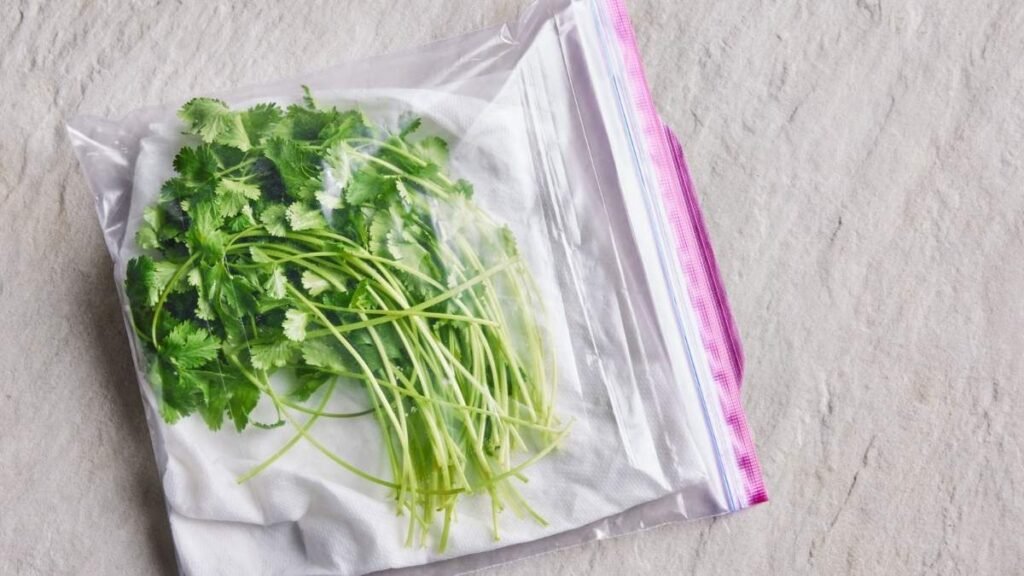
Once cleaned, it’s critical to dry the coriander thoroughly. Excess water trapped between leaves can cause them to rot faster. Use a salad spinner to remove moisture or gently pat the leaves dry with a clean kitchen towel or paper towel. Make sure the leaves are completely dry before moving on to storage.
Store in the Refrigerator with a Paper Towel
One of the simplest and most effective ways to store fresh coriander is by wrapping it in paper towels and placing it in the fridge. This method helps absorb excess moisture and reduces the risk of the leaves becoming soggy or slimy.
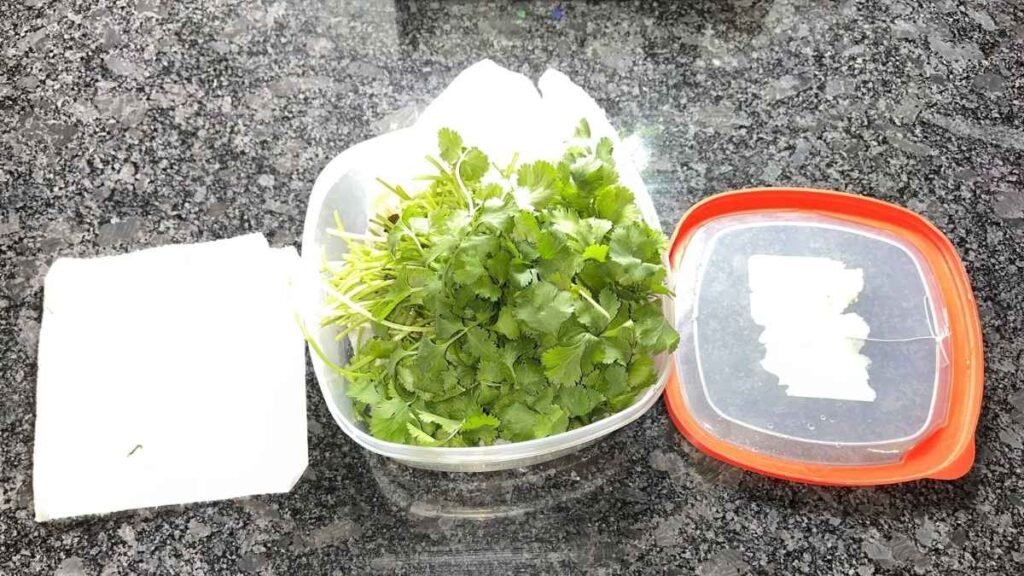
Lay the coriander on a dry paper towel, roll it up gently, and place it inside an unsealed plastic bag or airtight container. The paper towel acts as a moisture absorber while the container helps retain the right level of humidity. Store it in the vegetable crisper drawer of your refrigerator for best results.
This method usually keeps coriander fresh for about 10 to 14 days with minimal wilting or yellowing.
Store with Stems in Water, Like Flowers
Another popular method is to treat coriander like a bouquet of flowers. Trim the bottom of the stems slightly and place the bunch in a glass or jar with about an inch of water, just enough to cover the roots. Then, loosely cover the leaves with a plastic bag or zip-lock to create a mini greenhouse effect.
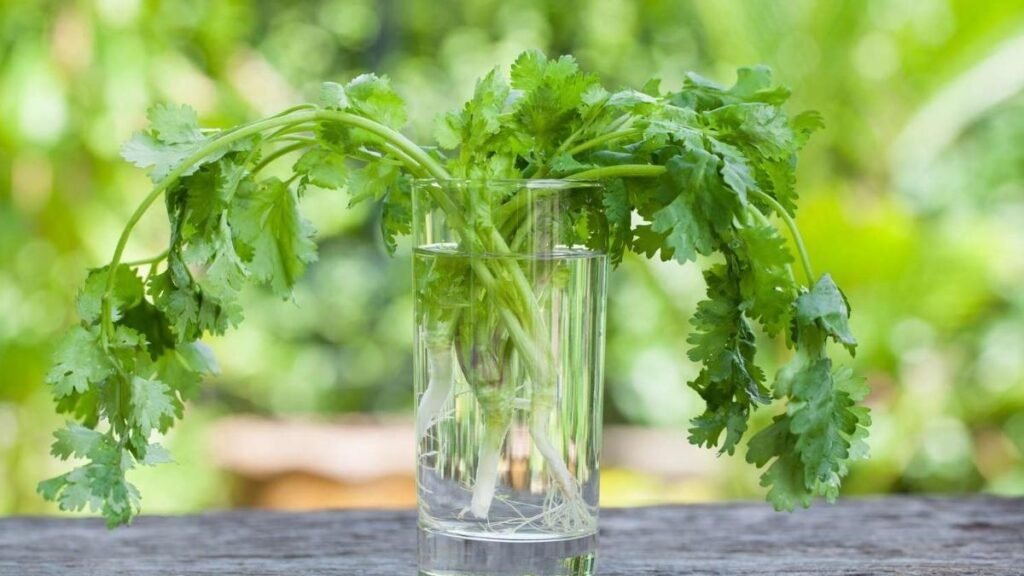
Store this setup in the fridge, changing the water every two or three days to prevent bacterial buildup. This method keeps the coriander hydrated while allowing airflow, which helps extend freshness for up to two weeks or more.
It’s important not to submerge the leaves in water, as this can lead to faster spoilage. Only the stems should be in contact with water.
Use Airtight Containers with Paper Layers
If you’re dealing with chopped coriander, storing it becomes a bit more delicate. Place chopped leaves in an airtight container lined with a layer of paper towel at the bottom. Add another paper towel on top before sealing the lid. This layering helps control moisture and prevent condensation inside the container.
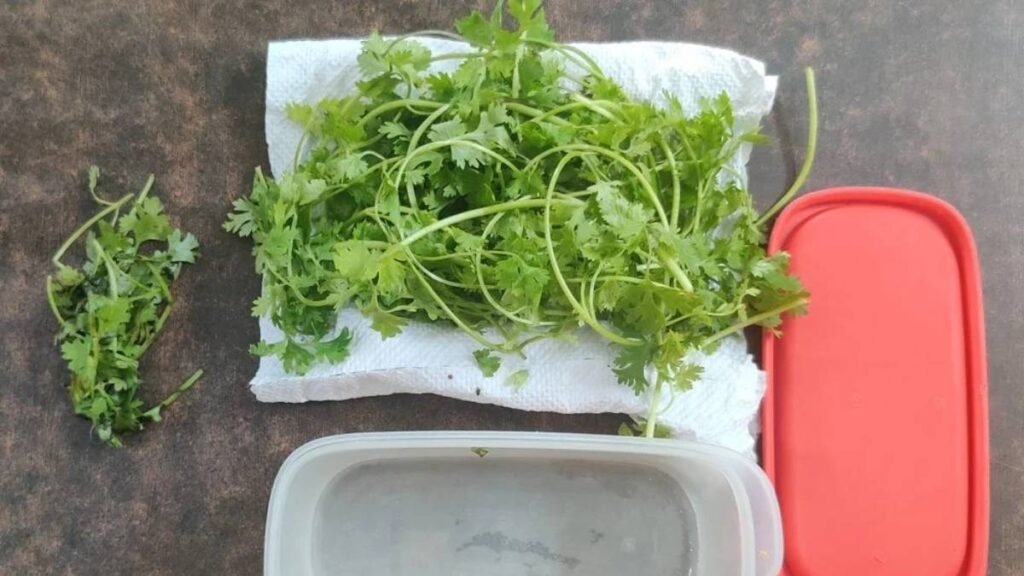
Avoid placing the container in the coldest part of the fridge, as this can damage the delicate leaves. Instead, place it on a middle or lower shelf where the temperature is more stable.
This method is best for short-term storage, keeping chopped coriander fresh for up to a week.
Freeze for Long-Term Use
If you have more coriander than you can use within a couple of weeks, freezing is a great long-term solution. While freezing changes the texture slightly, the flavor remains mostly intact, making frozen coriander ideal for use in cooked dishes like soups, curries, and sauces.
One way to freeze coriander is to chop the leaves and pack them into an ice cube tray. Add a small amount of water or olive oil to each section and freeze until solid. Then transfer the cubes into a freezer bag or container. These cubes can be dropped directly into hot dishes without thawing.
Another option is to dry-freeze the leaves. Spread washed and dried coriander leaves on a baking tray in a single layer and freeze for an hour. Once frozen, transfer the leaves into a zip-lock bag and store in the freezer. This helps preserve individual leaves without clumping.
Frozen coriander can last up to six months and is a great way to reduce waste and save money.
Avoid Storing Near Ethylene-Producing Fruits
Another important tip to keep in mind is where you place coriander inside your fridge. Fruits like apples, bananas, and avocados produce ethylene gas, which speeds up ripening and decay in sensitive produce like leafy herbs. To avoid premature wilting, don’t store coriander in the same drawer or shelf as these fruits.
Keeping it away from ethylene sources helps maintain its texture, flavor, and color for a longer period.
Final Thoughts
Storing fresh coriander so it lasts longer doesn’t require fancy equipment or complicated steps just a little bit of care and the right technique. Whether you choose to wrap it in paper towels, store it in water, or freeze it for future use, these methods can dramatically extend the shelf life of this fragrant herb.
By following a few simple steps, you can keep your coriander fresh, flavorful, and ready to use whenever inspiration strikes in the kitchen. So next time you bring home a bunch, take a few extra minutes to store it properly. Your recipes and your wallet will thank you.

